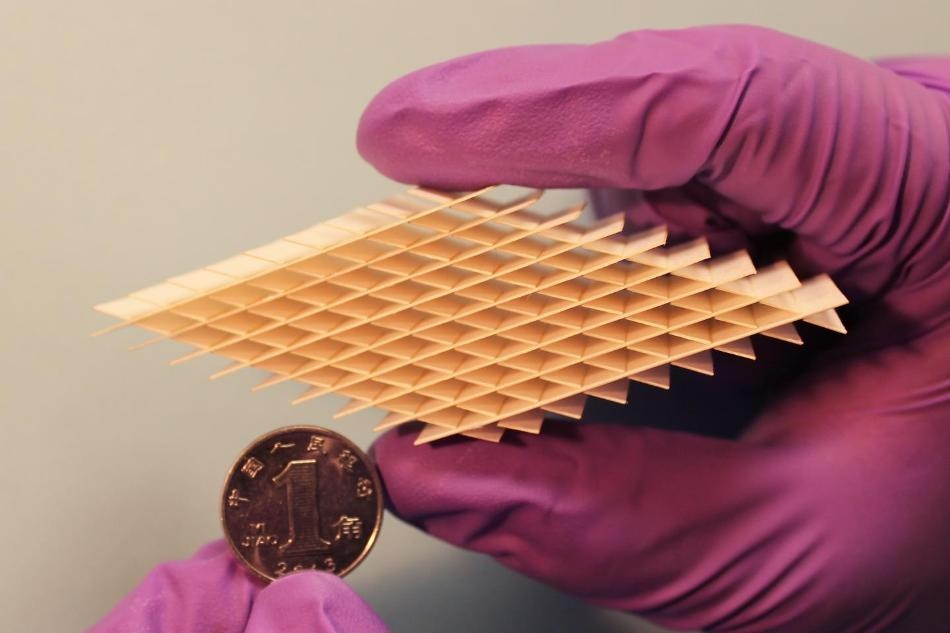Apr 13 2017
 Researchers have developed a paper-based device inspired by the Chinese and Japanese arts of paper-cutting that can harvest and store energy from body movements. Credit: American Chemical Society
Researchers have developed a paper-based device inspired by the Chinese and Japanese arts of paper-cutting that can harvest and store energy from body movements. Credit: American Chemical Society
One thing that remains constant in portable electronic devices, despite the numerous advances, refers to the need to plug these devices into a wall socket to recharge. In the journal ACS Nano, researchers have recently reported on the development of a light-weight, paper-based device inspired by the Japanese and Chinese arts of paper-cutting. This new device will be capable of harvesting and storing energy from body movements.
Portable electronic devices, such as heart monitors, hearing aids and watches, frequently need only a little amount of energy. These devices mostly obtain this power from standard rechargeable batteries. However, Zhong Lin Wang, Chenguo Hu and colleagues wanted to explore the possibility of untethering small energy requirements from the wall socket by harvesting energy from a user’s body movements. In recent years, Wang and others have been exploring this approach by developing triboelectric nanogenerators (TENGs) capable of harnessing the mechanical energy that is present everywhere, such as that produced by the footsteps of human beings. This energy is then used to power portable electronics. But most of the TENG devices take too many hours to charge small electronics, like a sensor, and they are made of acrylic, which is heavy.
Hence, the researchers now shifted their focus on an ultra-light, rhombic paper-cut design that is a few inches long and they covered it with a variety of materials in order to turn it into a power unit. The four outer sides, made of graphite- and gold-coated sand paper, comprised of the energy-storing supercapacitor element of the device. The inner surfaces, comprising of the TENG energy harvester, were made of paper and coated in a fluorinated ethylene propylene film and gold. Pressing and then releasing it for more than just a few minutes allowed the device to be charged to 1 volt, which was sufficient to power a watch, temperature sensor or a remote control.